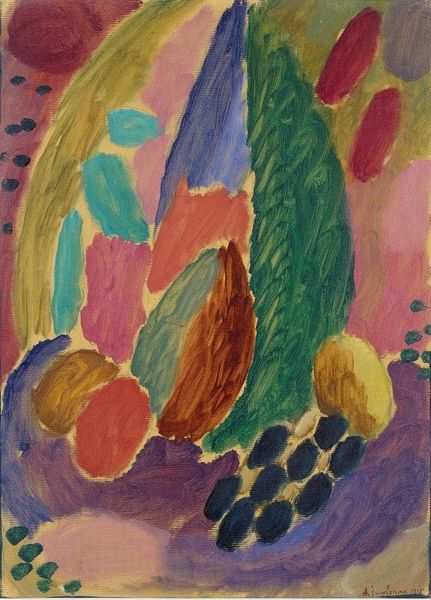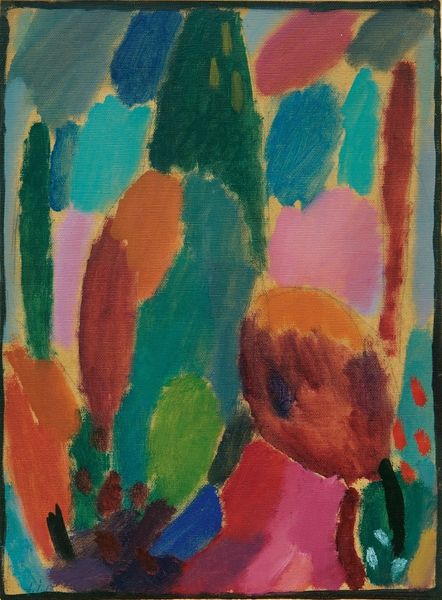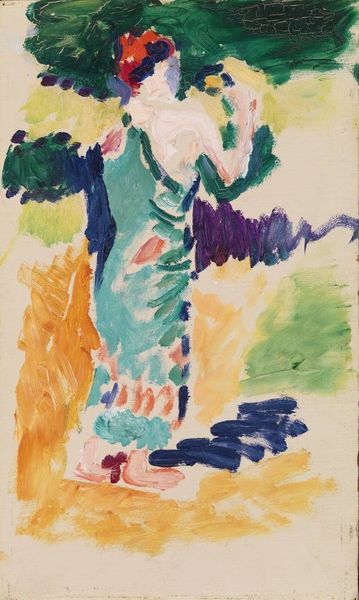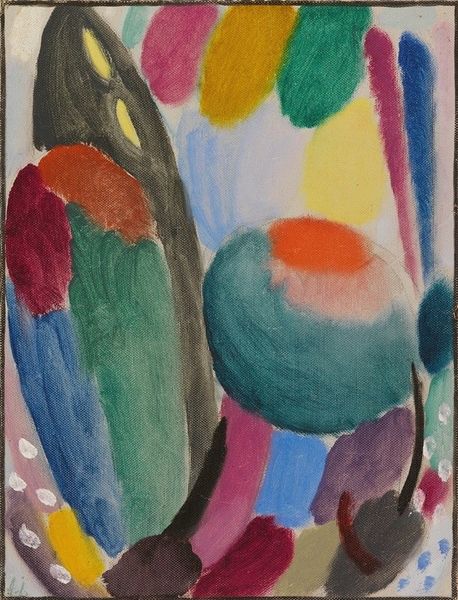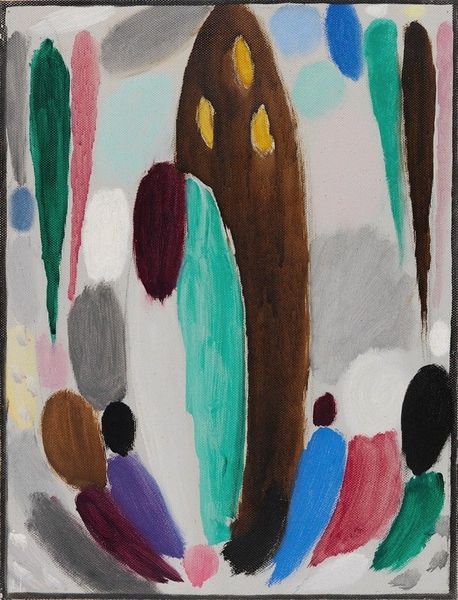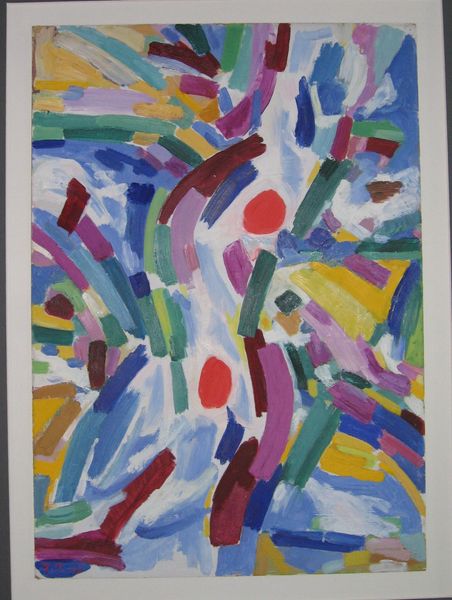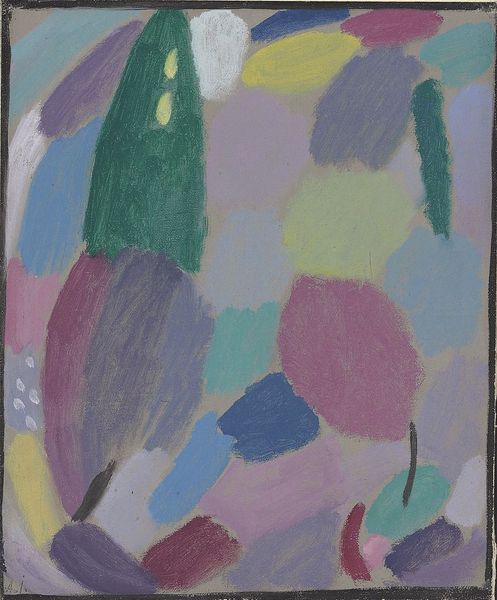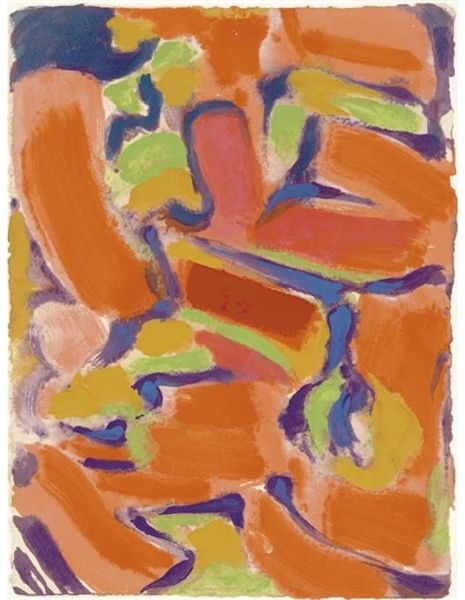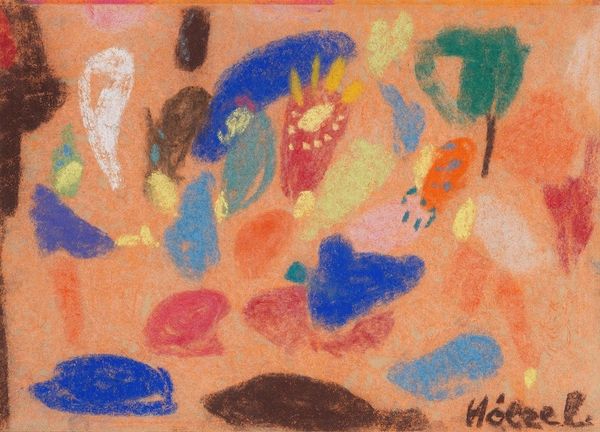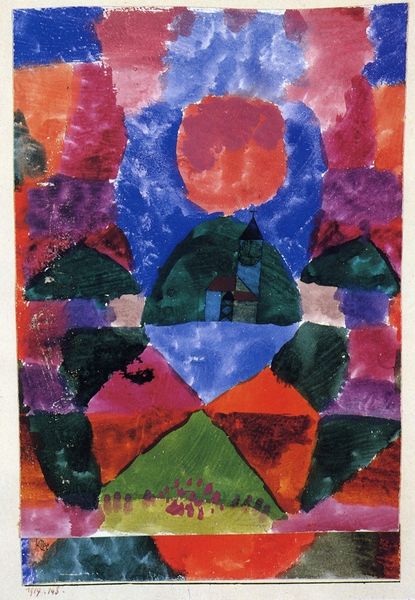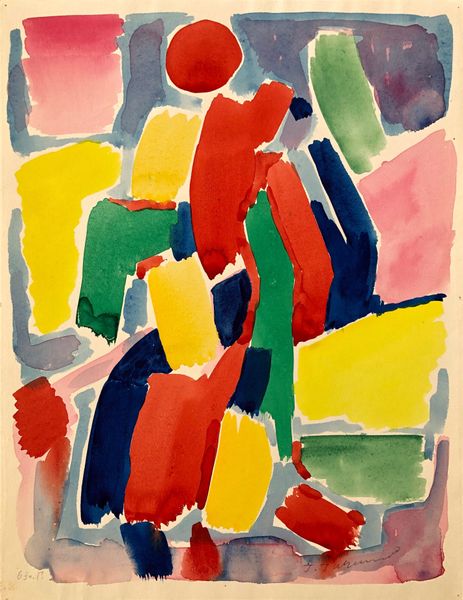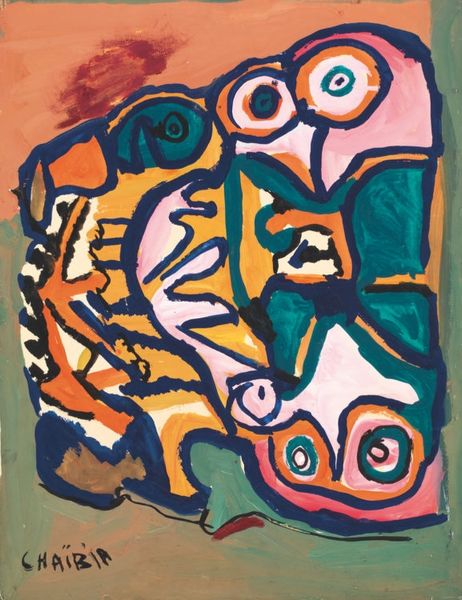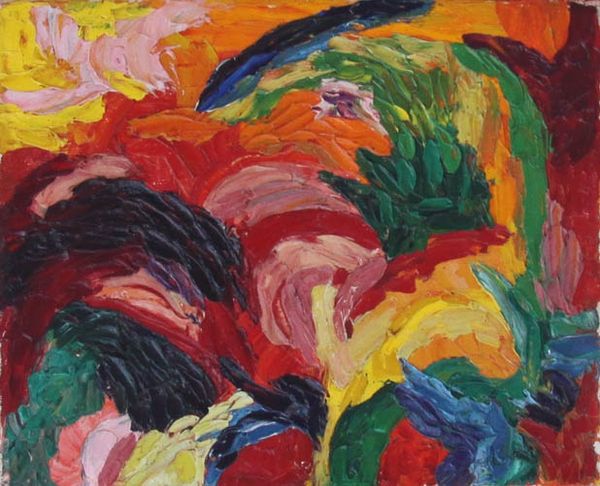
painting, oil-paint
#
abstract painting
#
painting
#
oil-paint
#
german-expressionism
#
oil painting
#
expressionism
Copyright: Public Domain: Artvee
Curator: It's my pleasure to introduce Alexej von Jawlensky's "Still Life," created in 1915 using oil paint. Editor: The colors grab me first. The intense pink vase and those playful red accents evoke such an optimistic energy, a bold defiance of what I imagine was a grim moment in history. Curator: Indeed. The Expressionists, including Jawlensky, used bold color choices deliberately. They believed in art’s capacity to express intense personal feelings—it became a powerful tool to wrestle with emotional upheaval, or challenge the growing mechanization of the world. Editor: Looking closely, I'm intrigued by his application of the oil paint. It’s almost sculptural, giving real heft to these forms, the opposite of polished academic art of that era. I wonder about the accessibility of his materials given the world events. Did scarcity shape his approach? Curator: Scarcity could have played a role. But also, Expressionists aimed to break from established artistic conventions. "Still Life," like much of his work, presents objects reduced to their essence. The subject matter appears less as an arrangement of things and more as symbolic presences, with clear art historical reference. Think of Cubism or Matisse. Editor: And what would that symbolism evoke to an audience of the time? Does the fruit, the vessel, reference Biblical motifs of abundance, or even sacrifice? Curator: These elements appear in traditional still lifes for centuries and can have spiritual meanings. The expressive quality, and the reduction of forms into these dynamic blocks of color… Well, it moves it far beyond conventional interpretations. It becomes a symbolic meditation on art making, really. Editor: It’s amazing to consider art's power to be of its time while speaking to an eternal, ever-changing dialogue. The simplicity belies a potent engagement with the social and material conditions in which this piece was produced. Curator: Exactly! It challenges us to engage with it emotionally and intellectually across the ages. Editor: That certainly rings true for me. It's an optimistic window into what Jawlensky wished to endure. Curator: A potent testament to the enduring power of expression.
Comments
No comments
Be the first to comment and join the conversation on the ultimate creative platform.
